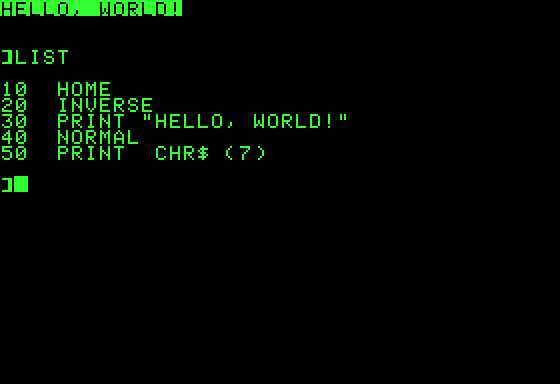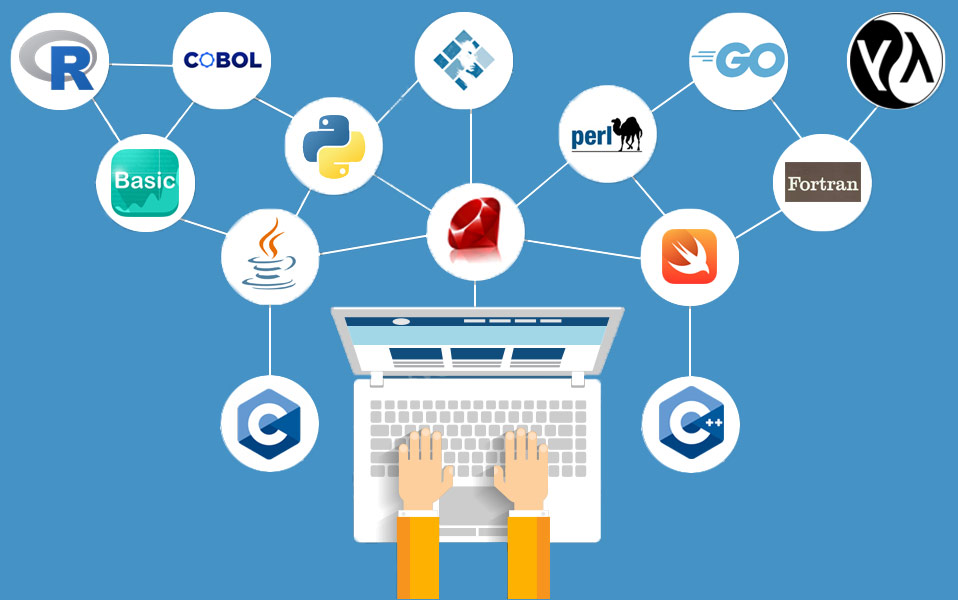
In addition to this, we have the C/C++ constants true and false. The other constant we have is LED_BUILTIN, which points to the number of the on-board pin, which usually equates to the number 13.
#WHAT LED TO BASIC PROGRAMMING LANGUAGE CODE#
Projects exist, among others, to let you run Node.js code on it using the Johnny Five project, Python code using pyserial and Go code with Gobot, but the Arduino Programming Language is definitely the one you’ll see most tutorials based upon, since it’s the native and canonical way to work with these devices.

Support for other languageĪs a reminder, I want to note that you are not limited to using this language and IDE to program an Arduino. This is all part of the Arduino Programming Language, or we’d better call it suite or library. Configure pin 13 to be a digital output Like this, the canonical first Arduino project (the “Hello, World!”): To do so, you will use the pinMode(), delay() and digitalWrite() functions, along with some constants like HIGH, LOW, OUTPUT. Your first Arduino program will surely involve making a led turn on the light, and then turn off. Part of the Arduino Programming Language is the built-in libraries that allow you to easily integrate with the functionality provided by the Arduino board. Might be a deal breaking limitation if your program will grow very large, but at that point it will be easy to move to a native C++ setup, which is possible. One difference that might cause you troubles is that while you can spawn your program over multiple files, those files must all be in the same folder. Once you compile your sketch, the IDE will make sure the end result is a correct C++ program and will basically add the missing glue by preprocessing it.Įverything else is normal C++ code, and as C++ is a superset of C, any valid C is also valid Arduino code. We don’t have a main() function like you are used to in C/C++ as the entry point for a program.

The first is called once, when the program starts, the second is repeatedly called while your program is running.

One is called setup(), the other is called loop(). You can have more than 2, of course, but any Arduino program must provide at least those 2. The main difference from “normal” C or C++ is that you wrap all your code into 2 main functions. You can argue that it’s not a real programming language in the traditional term, but I think this helps avoiding confusion for beginners.Ī program written in the Arduino Programming Language is called sketch. The Arduino Programming Language is basically a framework built on top of C++.
#WHAT LED TO BASIC PROGRAMMING LANGUAGE SOFTWARE#
When we work with Arduino we commonly use the Arduino IDE (Integrated Development Environment), a software available for all the major desktop platforms (macOS, Linux, Windows), which gives us 2 things: a programming editor with integrated libraries support, and a way to easily compile and load our Arduino programs to a board connected to the computer. The Arduino IDE is based upon the Processing IDE, and the Wiring IDE which builds on top of it.

It’s a long history of projects building upon other projects, in a very Open Source way. This language is based upon the Wiring development platform, which in turn is based upon Processing, which if you are not familiar with, is what p5.js is based upon. How can you write programs for your Arduino board?Īrduino, natively, supports a language that we call the Arduino Programming Language, or Arduino Language.


 0 kommentar(er)
0 kommentar(er)
